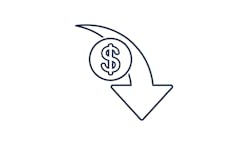As customer demand for collision repair appears to fall across the country, some shops may experience cash flow issues. What can shops do to prevent this? Obviously, draw in as many good collision customers and fix as many cars as you can. Secondly, and the subject of this month’s column, I would start by looking at ways to cut out some of the below-the-gross profit line expenses. Now, granted, it’s not going to do much good to call your electric or gas company and tell them you think utilities are too high. So, is it futile to even try to lower overhead expenses?
Back in the 10th century, there was a Chinese torture called lingchi — translated as “slow slicing” — or as it’s better known, “death by a thousand cuts.” I am not a morbid person or anything like that, but this was a form of a very slow torturous way for someone to die. When used in the context of business, I find it very applicable to our industry. At the time of this writing in 2024, it’s obvious to see we are living in a subscription-based society. It’s just crazy when I look at my credit card bill and find multiple recurring monthly and annual subscriptions. Many are software companies for estimating, management systems, accounting, payroll, parts ordering, OEM procedures, websites, CSI services, paint mixing, etc. Then we have waste disposal, I-CAR, OEM certifications, inventory management etc. Finally, possibly recurring consulting fees, co-op fees, association dues, security, office TV, laundry, radio, billboards etc. Talk about slowly bleeding out!
If we were to just call up every one of these vendors and ax them, it would be very hard to operate our businesses in the current collision repair marketplace. Besides that, many of us have signed auto-renew contracts without even knowing it. So, what can we even do to stop the bleeding — or at least lessen it??
I would start by opening an Excel sheet and listing every recurring subscription charge you have on a regular basis, whether paid by credit card, check etc. Then, sit down with the decision-makers in your shop to discuss each cost, as to whether you are getting value out of each one or not. No one cares more about your money than you. and you must guard the door to the safe. You will never get a call from a vendor stating: “We have looked over your usage of our product, and you might as well cancel your subscription to save yourself some $.”
In the last year, I looked at every subscription I have. In my gut and on paper, I knew I had two subscriptions that needed to go. Fortunately, I had no contracts with either vendor. and both were cordial in my cancellation of their product. Both subscriptions totaled $2,410 per month!! Multiply this by twelve months, and that’s $28,920 per year!! Now understand, since I canceled these two products, I have had to add two other subscriptions for parts ordering and materials management. Fortunately, they only totaled around $6,000 per year. So, after shuffling my subscriptions, I have a net savings of approximately $23,000 per year.
Besides just canceling subscriptions, you might be able to negotiate down their individual costs. I have done this with my credit card machine and garbage pickup vendors. It’s funny, though, how they will start inching up after 6-12 months of negotiations and you must keep an eye on them.
During the last three years of the collision gold rush of wrecked cars and inflation, most shops have increased head count and wages. Out of all the below-the-line expenses, administrative payroll is the largest. Not only does each employee require wages, but there’s vacation, bonuses, payroll taxes, retirement, health insurance, uniforms, and workman’s comp/liability insurance to pay for. The point here is it might be worth looking at every administrative employee, just to confirm that they are adding enough value for their compensation. Your administrative payroll as a percentage of gross sales shouldn’t be higher than 15%. Ideally, 10% should be the goal, but that is very tough to do these days with the necessary OEM procedure research. Please understand that one of the hardest things to do as an owner is letting someone go. But as the captain of my ship, my responsibility is to do what is best for the ship and its crew. I have been in shops that had probably two to three too many folks in their admin. department, and then the owner wondered why they have no profit left at the end of each month.
We cannot spend what we have been spending, if we are not making what we were making. It’s just that simple. Please take time to confirm your money’s worth out of every overhead expense!
